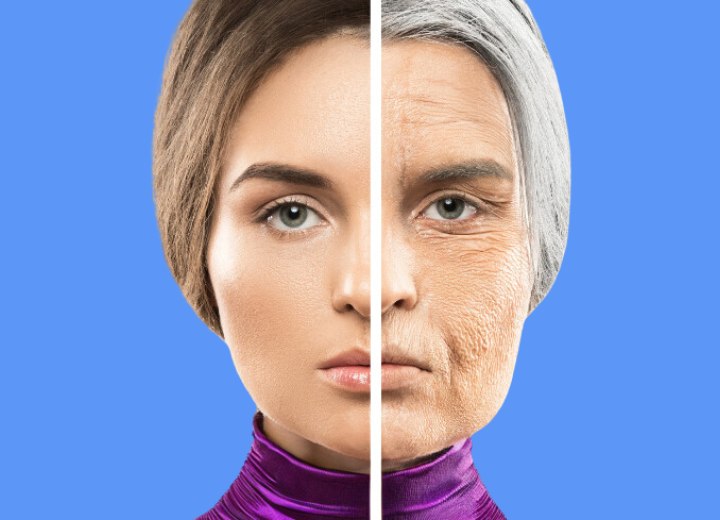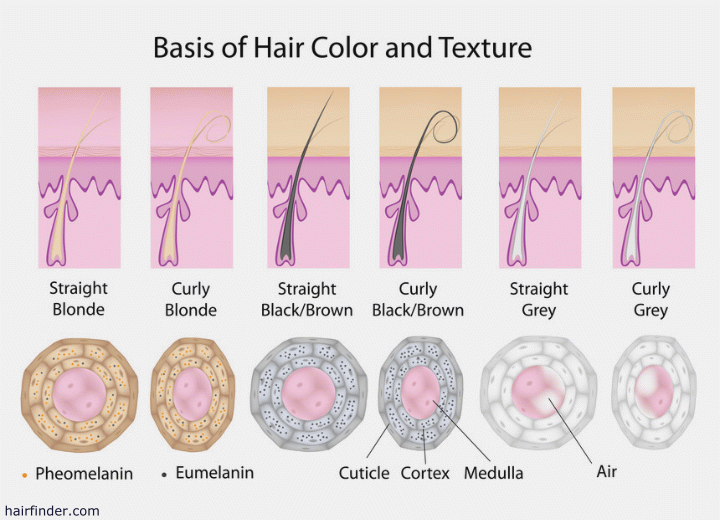Why and How Does Hair Turn Gray?

Each person ages according to the genetic code stored in his or her DNA. Sometimes this means that a person will reach the age of 80 with his or her youthful hair color, while another person may be shock-white by the age of 25. Of course, these are extreme cases in opposite directions, and most of us fall into the middle range along various points.
The Mechanics of Graying Hair
We all know that our bodies are made up of millions and millions of cells that make up the organs and systems and perform countless functions to sustain our lives and allow us to grow from infant to adulthood. These cells live, age, reproduce, and die in a cycle, constantly renewing themselves according to their genetic blueprint and the job they have to perform within the body.
In the skin, some of the cells have the job of producing pigment. These cells are called melanocytes, and they produce melanin. The type and amount of melanin they produce are what give our skin its color and determine how sensitive we are to the UV radiation of the sun. There are also melanocytes in the cells that make up the hair follicles, whose job it is to grow the hair on our bodies.

Of course, as we age, the cells in our bodies begin to break down. Some scientists have explained this breakdown by comparing it to the results you get when you make a copy of a document on a copier and then proceed to make a copy of the copy, repeating this process with each successive copy. Eventually, the copy begins to degrade and become less and less sharp. Cell replication is comparable to this in that after so many replications the cells break down and cease to function or function less effectively.
When this happens to the melanocytes in the hair follicle, the hair that grows from the follicle begins to lose its pigment, becoming lighter. If the melanocytes stop functioning altogether, the hair will become completely gray. It should be noted that the hair follicles and even the cells in the follicles operate independently of one another. This is why gray hairs are typically found in individual strands. Even when gray hairs seem to be clustered a few inches apart on one side of the head, they may be separated by hundreds of other follicles.

In some cases, removing factors that can effect the melanocytes’ production of melanin (or introducing new factors to bolster cell growth and regeneration) could allow the melanocytes to resume production of melanin normally. However, research on this has been sketchy and in order to find real medical treatments for gray hair, we will likely be waiting many more years for studies to be completed.
But you can see now, the basics of how hair turns gray. Hopefully, this will take some of the mystery out of the process. And while it doesn't make it any more pleasant to deal with, it does help to understand the underlying causes and the processes that lead to hair turning gray.
©Hairfinder.com
See also:
Going gray
Gray Hair Q&A
Is there a remedy to reverse gray hair?
Does pulling gray hairs out cause more to grow back?
